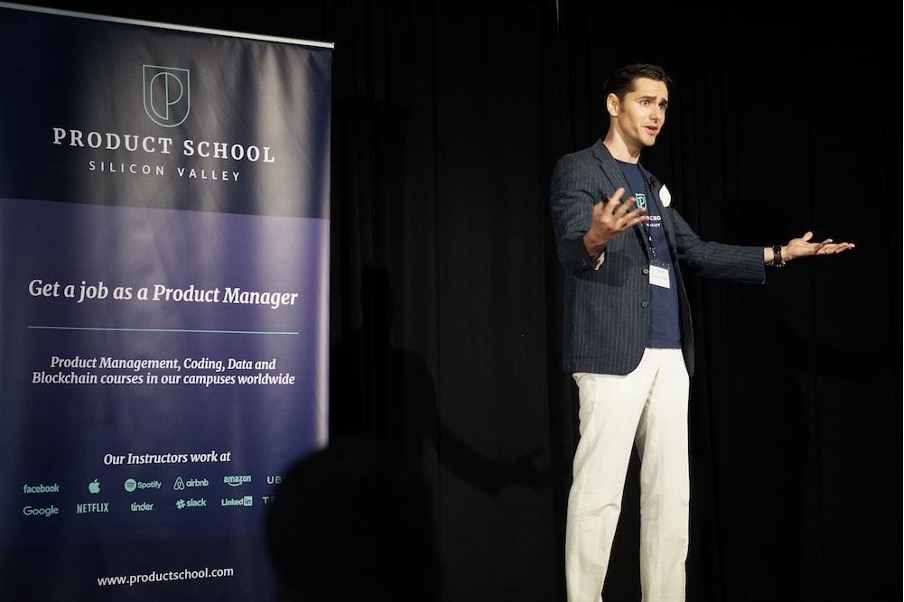- Handling qualitative data
- Transcripts
- Field notes
- Memos
- Survey data and responses
- Visual and audio data
- Data organization
- Data coding
- Coding frame
- Auto and smart coding
- Organizing codes
- Qualitative data analysis
- Content analysis
- Thematic analysis
- Narrative research
- Phenomenological research
- Discourse analysis
- Grounded theory
- Deductive reasoning
- Inductive reasoning
- Inductive vs. deductive reasoning
- Qualitative data interpretation
- Qualitative data analysis software
- How to cite "The Ultimate Guide to Qualitative Research - Part 2"
- Thematic analysis vs. content analysis
Discourse analysis
The way that people speak, write, and otherwise communicate with others has a profound effect on the meaning being conveyed.
We expect a recipe in a cookbook to have a particular format. A job interview has a certain structure that is different from a friendly conversation. People speak to their boss in a way that is different from how they speak to their parents.
Discourse analysis focuses on these types of texts, be they in written or spoken language, or other modes of meaning-making. Discourse analysis examines both the content of communication and the way in which it is conducted, including the social context and cultural context surrounding the use of language. Those who conduct discourse analysis on a given text analyze both their linguistic content and language use.

What is discourse analysis?
Discourse analysis aims to examine language in its social context. It examines how social realities are constructed and understood through language, going beyond just the words spoken or written. It aims to reveal the cultural, political, and sociological dimensions within a communication, whether it's an informal chat, a novel, a business meeting, or a social media post.
In discourse analysis, language is not just a neutral means of conveying information. Instead, it plays an active role in shaping our understanding of the world and social relations. By studying the nuances of language, such as its structure, style, and context, we can reveal more about societal structures, power dynamics, and ideologies.
What is an example of discourse analysis?
Let's consider an example to illustrate this concept. Suppose a team in a corporate setting conducts a series of meetings to discuss a potential project. In these meetings, the language used, the topics discussed, the dynamics of the conversation, and the hierarchy of speaking will all form part of the discourse.
A discourse analyst studying this scenario would not only focus on the words spoken but also on how they are said, who says them, in what order, and with what intent. They may explore patterns such as whether junior team members speak less frequently or if certain ideas are immediately dismissed.
Such patterns could reveal underlying power dynamics or ideological bias within the team.
Real-world applications of discourse analysis
Discourse analysis is widely applicable across various fields due to its interdisciplinary nature.
In sociology, it helps reveal societal norms and values. In politics, it can help researchers decode political speeches to understand underlying messages and strategies. In marketing, it enables the comprehension of consumer attitudes and perceptions.
One real-world application of discourse analysis is in the field of media studies. Discourse analysis can help with deconstructing the news, identifying biases and highlighting how language is used to shape public opinion. Another application could be in the field of healthcare, where it can assist in understanding patient-doctor communication, thereby contributing to improved care.
Forms of discourse analysis
Discourse analysis is a common qualitative research method. Researchers use discourse analysis for various purposes. As such, there are several different forms of discourse analysis, each focusing on different aspects of language and its use in context. Some of these forms are explained below.
Narrative analysis
Narrative analysis is an approach within discourse analysis that centers on the study of stories. These stories, or narratives, can be drawn from a variety of sources, such as interviews, observations, or written texts.

This form of analysis looks at how individuals structure their experiences and make sense of the world through storytelling. It acknowledges that the way people narrate their experiences is not merely a reflection of those experiences but a constructive process that provides meaningful insight into their social and psychological realities.
There are several elements that a narrative analysis might focus on, such as the structure of the narrative, the characters involved, and the sequencing of events. For instance, an analyst might look at how a person positions themselves within their story, whether as a protagonist, a victim, or a bystander. These roles can reveal a lot about an individual’s self-perception and worldview.
Likewise, the way in which events are sequenced can provide insights into how the individual sequences and assigns significance to different events. Narrative analysis, therefore, serves as a powerful tool to understand individual perceptions, social roles, and cultural norms.
Rhetorical analysis
Rhetorical analysis is another specialized form of discourse analysis that scrutinizes the methods and strategies of persuasion employed in a piece of text or speech. This method acknowledges that language is not just a passive conveyor of ideas but an active tool designed to influence and persuade audiences.

In this analysis, an analyst might look at a variety of elements, such as the use of figurative language (metaphors, similes, analogies), the logical structure of arguments, and the use of emotional appeals.
For instance, a rhetorical analysis of a political speech might examine how a politician uses specific metaphors or analogies to frame issues in a way that resonates with their audience's values and beliefs. It might also analyze how the speaker structures their argument, considering whether they employ logical reasoning, emotional appeals, or ethical arguments to persuade their audience.
This approach is often used in fields like politics, advertising, and literature. However, it can also be useful in everyday contexts, enabling individuals to engage critically with the persuasive messages they encounter daily.
Conversation analysis
Conversation analysis (CA) is another common branch of discourse analysis that primarily focuses on the study of talk-in-interaction. It emphasizes understanding the structure and processes of social interaction that happen in everyday conversation.
Other forms of discourse analysis may look at larger social or cultural issues. However, CA focuses more closely on how people talk to each other in real-life situations, and it typically involves close analysis of each individual turn, including intonation.
Conversation analysts often work with recordings of natural conversation to examine in fine-grained detail the mechanisms and patterns of social interaction. They consider the order of turns in conversation, the length of pauses, the use of different speech acts, and non-verbal cues.

Each of these components plays a critical role in how a conversation unfolds and how meaning is made. For example, discourse analysts may investigate how questions and answers are structured in a conversation, who initiates a particular topic and who gets to speak more often, or how interruptions are managed.
The study of these patterns can offer insights into social roles, norms, and expectations that govern conversations.
Critical discourse analysis
Critical discourse analysis (CDA) is a form of discourse analysis that critically examines the relationship between language and power. It posits that language is not neutral but intimately connected with social power dynamics and ideologies.
According to CDA, discourses – everyday conversations, media reports, or political speeches – can subtly reproduce and reinforce societal power structures and ideologies. In this case, conducting critical discourse analysis is about the changes that the discourse effects, which researchers can study in addition to the actual meaning conveyed.

When conducting a critical discourse analysis, an analyst will look at a variety of factors. For instance, they might examine who has the authority to speak, who remains silent, and what topics are considered legitimate or illegitimate. They might also look at the use of specific words or phrases and consider how these language choices reflect and reinforce certain ideologies.
For example, a CDA of a news report might uncover biases in the way the report frames certain issues, highlighting how these biases serve to uphold certain power structures. Similarly, a CDA of a company's internal communications might reveal how the company's language practices reinforce certain hierarchical relations or marginalize certain groups.

By revealing these hidden power dynamics of discourse, CDA serves as a useful tool for promoting social justice and equity. A critical discourse analysis of qualitative data has the potential to challenge the assumptions of knowledge conveyed through analysis of power relations and point to how such a power imbalance can be remedied through language use.
How to conduct discourse analysis
Conducting discourse studies is an iterative and multifaceted process that requires careful planning, execution, and interpretation. The general process, however, can be divided into several sequential steps:
Define your research questions
The first step in discourse analysis is formulating clear and concise research questions. What are you hoping to uncover from the discourse? Are you interested in understanding power dynamics, revealing social norms, exploring the construction of identities, or analyzing the mechanisms of persuasion? The answers to these questions will guide your choice of data, your method of analysis, and the conclusions you draw.
Choose an analysis strategy
The research question determines the most appropriate unit of analysis for your study. If you are studying a classroom context, for example, you might look specifically at a teacher's questions and the responses by students. This might involve dividing your transcripts into episodes and analyzing each episode for the type of question posed and the responses elicited for the purpose of identifying what is being taught and learned.

In another example, imagine analyzing discourse involving speakers who are in the process of learning a language. You might consider identifying instances in a discourse where speakers struggle with the language while communicating (e.g., searching for the right word, resorting to another language) to examine their extent of success in navigating the challenges of communication. You may also choose to analyze how their interlocutors respond when they navigate those challenges (e.g., are they belittled or treated with patience?).
Whatever strategy you employ, it's important to reduce the data to a coherent set of analytical units that are relevant to the research question you are seeking to address.
Analyze the discourse
The heart of discourse analysis lies in the detailed examination of your material, as is the case with all qualitative methodologies. The specific focus of your analysis will depend on your research questions and the type of discourse analysis you are conducting.
For instance, if you are conducting a narrative analysis, you might analyze the structure of the narratives, the roles of different characters, and the sequencing of events. A thematic approach to discourse might examine the patterns and recurring themes inherent to a particular interaction. If you're analyzing rhetoric, you'll focus on methods of persuasion, such as the use of figurative language and emotional appeals.
In a CA approach, you'll concentrate on the mechanisms of social interaction, such as the order of turns and the use of different speech acts. If you are using video data, you can also analyze body language in conjunction with spoken utterances and other non-verbal cues accompanying word choice.
While conducting your analysis, it's essential to continually link your findings back to your research questions, and you may reshape your research question as you engage in data collection and analysis since qualitative research often supports adapting the study to emerging findings. Also, consider how your findings relate to the broader social and cultural context of the discourse.
Develop and refine interpretations
As you conduct your detailed analysis, you also begin interpreting your findings. What do they reveal about your research questions? How do they help you understand the broader context you're interested in? In your interpretations, strive to balance the specific details of your material with the broader conceptual or theoretical frameworks you may be using in your discourse analysis.
The process of discourse analysis is rarely linear. As you review your material, new insights may emerge that prompt you to revisit your research questions, your material, or your analysis.

Don't be afraid to refine your analysis in light of these new insights. The final review of findings is never truly final until answers to your research questions have been sufficiently developed.
You can also apply your findings to new data to confirm what you have learned from previous discourse analyses to further refine your understanding of the specific context you are examining.



